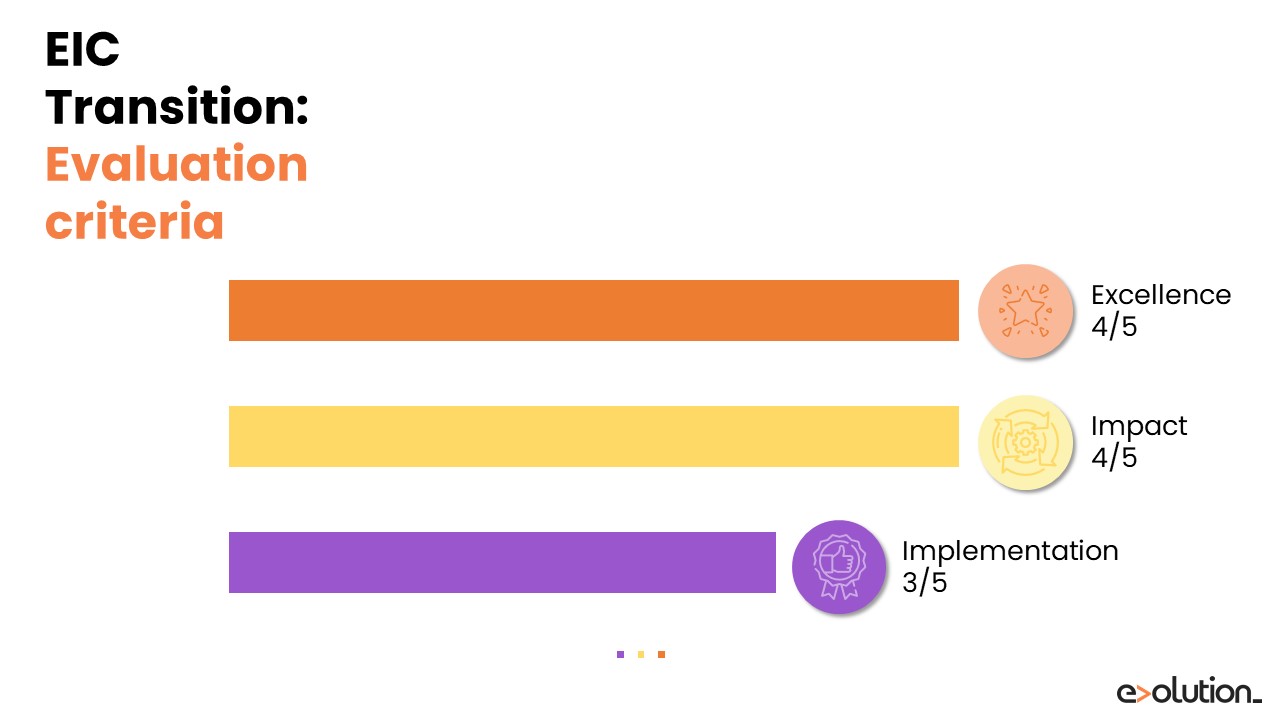FAQ: Is the EIC Transition funding line the ideal option for you?

EIC Transition has probably come to your mind if you are going to decide which one could be the right alternative between the European Innovation Council funding options.
Following our EIC FAQ Series, which started explaining the EIC Pathfinder details, we have compiled the main information to help you check out if this programme is suitable for your R&D project.
As it happens with the other EIC funding lines, the EIC Transition counts on two funding schemes: Open and Challenges, with slight differences that are important to know.
Will EIC Transition be your choice to make your ideas grow? Find out by reading these frequently asked questions!
EIC Transition
What makes EIC Transition different?
Transition focuses on turning innovative ideas into business opportunities. In this way, this funding option is looking for innovation activities that go beyond the experimental proof of principle in a laboratory and aim to develop business plans (TRL 4 to TRL 5-6).
This programme offers grants to demonstrate and validate technologies in an application-relevant environment and promote their market readiness.
Who can apply?
Applicants can be:
- Mono-beneficiaries: A single legal entity established in a EU member state or Associated Country, as long as they are SMEs or research performing organisations. Larger companies are not allowed to apply under this option.
- Multi-beneficiaries: A small consortium from two to five organisations. For example: universities, research institutes, SMEs or larger companies and even potential end-users.
One of the main characteristics of the EIC Transition applicants is that it is restricted to three kinds of eligible projects:
- EIC Pathfinder projects.
- FET (Future and Emerging Technologies) projects.
- European Research Council (ERC) Proof of Concept projects.
- European Defence Fund
- Pillar 2 Horizon 2020/Horizon Europe projects
You can apply if you participated in the project, or if the owner of the results grants you rights of use of them.
I meet the requirements, so what now?
The EIC Transition cut-off for 2024 is on 18 September at 17h Brussels local time.
What support will funded projects receive?
The total budget for EIC Transition is €94 million. The funding rate is up to 100% of eligible costs taking into account that the EIC contemplates €2.5 million as the appropriate quantity. However, it is possible to request more significant amounts if properly justified.
Successful Transition proposals can also get up to €50,000 to better manage portfolio related activities and benefit from Business Acceleration Services and matchmaking events.
What should you know about the evaluation process?
Once you submit your proposal, a group of three or more EIC experts will study and evaluate it. Then, applications will be ranked from the highest to the lowest score. If your proposal doesn’t pass the threshold in one criteria, you will be able to participate again in the next 12 months. But, if it is scored below threshold in two or three, you will have to wait one year to resubmit it (a piece of advice: allocate as many resources as you can to this first opportunity).
A batch of the best proposals will move to the next step of the EIC Transition evaluation process: a face-to-face interview with a jury formed by six components maximum. At this point, up to five members of your organisation should defend and correctly pitch your initiative (especially, you will be asked to talk about your milestones and the quality of your team). After this interview, your proposal will get or not the grant (“GO” or “NO GO”).
The evaluation is based on the following criteria:
- Excellence (threshold 4/5): The evaluation committee will evaluate technological breakthrough, objectives and methodology in this part.
- Impact (threshold 4/5): Credibility of the impacts, economic and/or societal benefits and investment readiness will be considered at this point. For EIC Transition Challenges, the capability of impacting on the specific objective will be evaluated also here.
- Quality and efficiency of the implementation (threshold 3/5): Issues such as quality of the team, milestones and work plan, and allocation of resources are essential here.

It is worth mentioning that if you are applying from an individual SME and meet all the evaluation criteria but your proposal doesn’t get the final GO due to budget limits; you will receive a Seal of Excellence that certifies the quality of your project and can be helpful to find alternative funding. To obtain a Seal of Excellence, you should have given your permission to share your data with other funding institutions.
How can I apply?
To participate, applicants are submitting a 22 A4-page proposal through the EIC AI Platform when available, meanwhile, the European Funding & Tender Opportunities Portal will be used.
EIC Transition Open
What is the budget for this call?
This call counts on a total budget of €70.9 million.
Specifications for EIC Transition Open’s budget allocation are the same as explained above.
Which topics are suitable for EIC Transition Open?
All science and technology fields are welcome to apply to EIC Transition under its Open modality as long as they involve the opportunity to address maturation and validation in the lab and relevant application environments as well as the development of future commercialisation.

